The Reti opening is a hypermodern opening that was created by one of the pioneers of hypermodern chess, Richard Reti.
Czech chess grandmaster Richard Reti (1889-1929) was a prominent figure in the chess world during the 1900s. He was known as a strong theoretician and writer.

The concept of hypermodern chess revolves around the development of minor pieces (bishops and knights) to control space and attack the center indirectly rather than using pawns.
The Reti opening (also called Zukertort opening) starts with 1. Nf3.
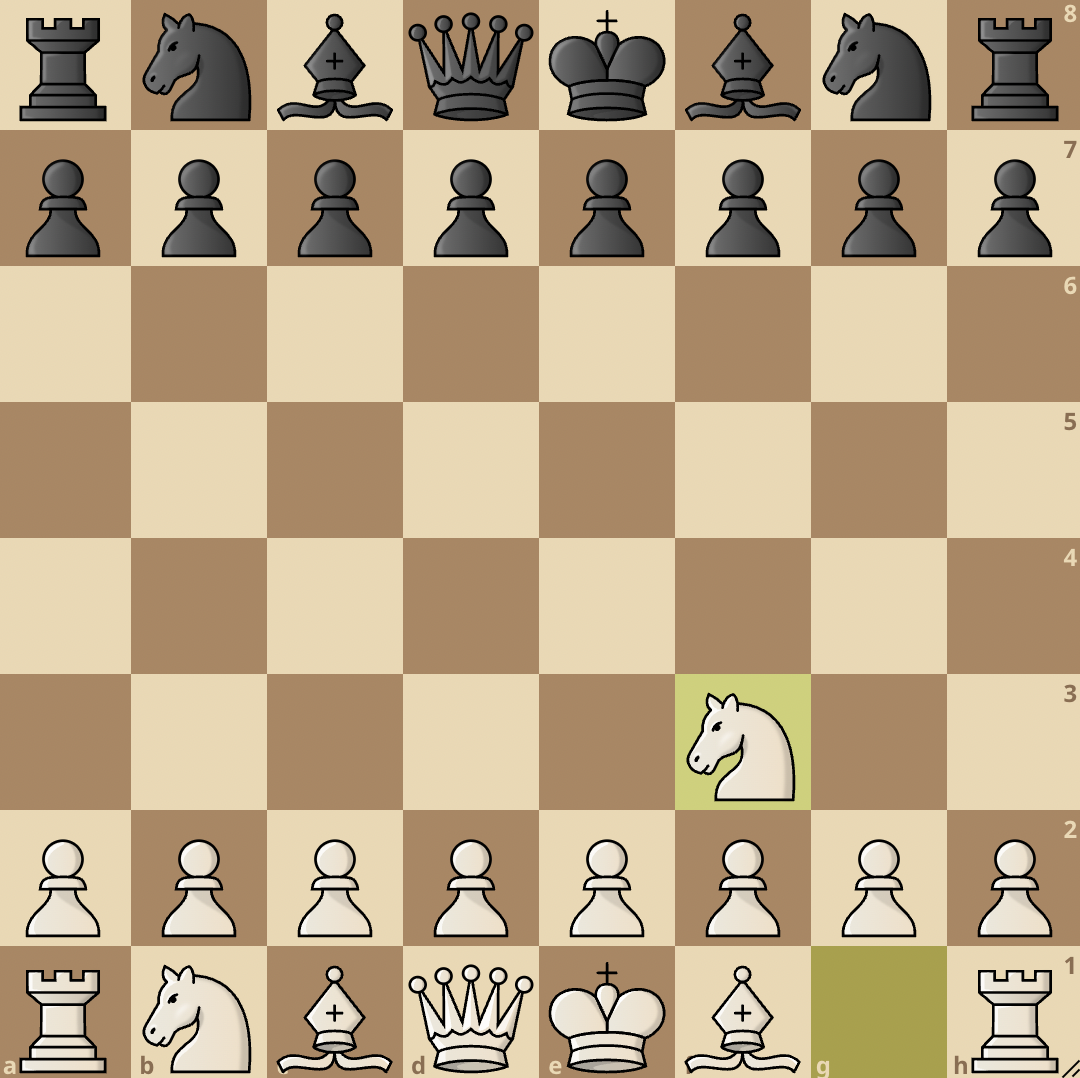
It’s important to note that the Reti is a very flexible opening that can be used as a means to disguise a player’s intent.
This is because after the first move 1. Nf3, White can transpose into various other openings depending on what type of game they want to play and also the reply Black gives.
While players often use the Reti as a means to transpose into other openings, the Reti itself has some lines of its own that start after Black replies with 1…d5.
After 1. Nf3 d5, the Reti continues with 2. c4. The c4 move signifies the start of the Reti Gambit.
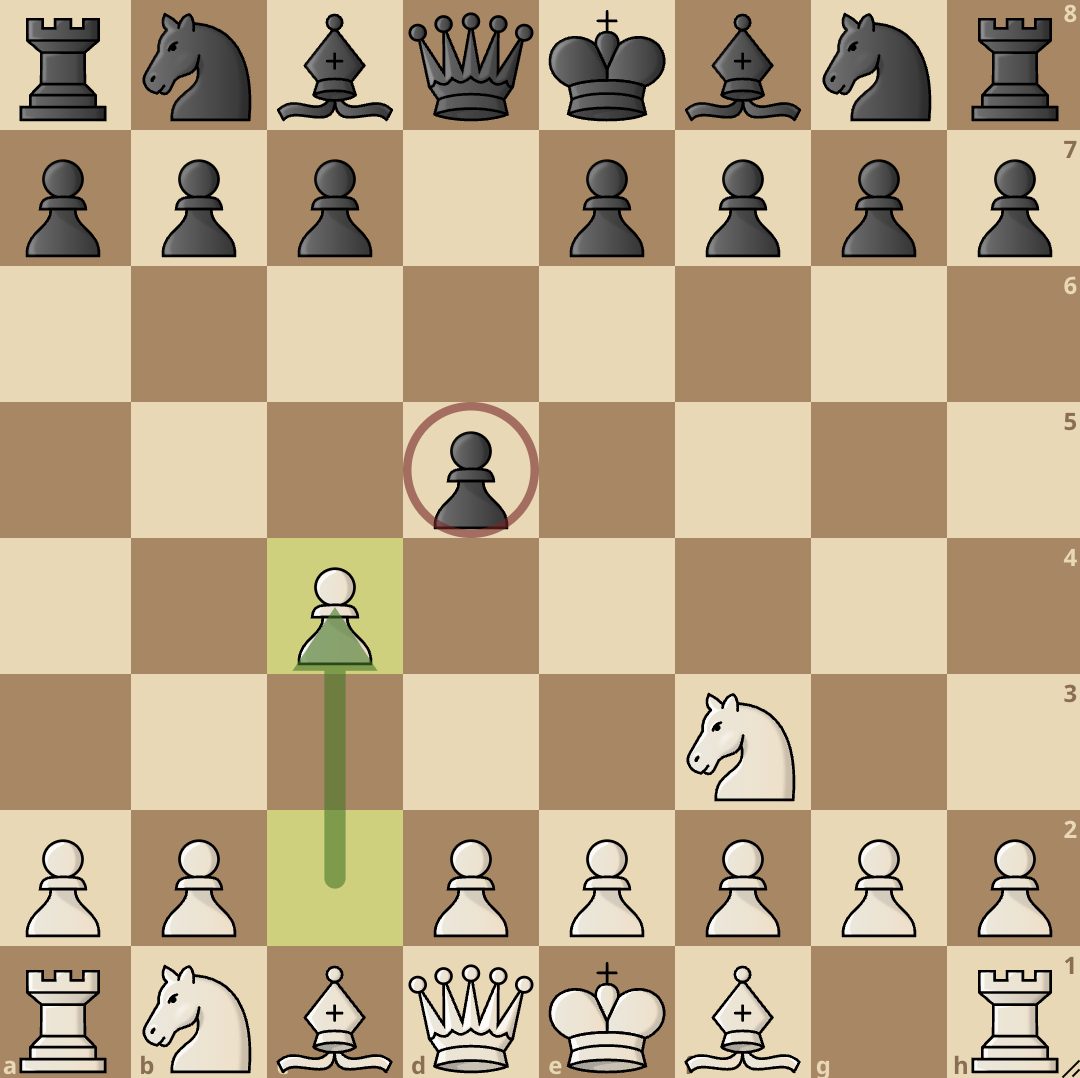
In the Reti Gambit, White offers the c4 pawn in the hopes that Black will capture it and lose their grip on the e4 square.
After 2. c4, Black has a few options they can go for, they include:
- 2…d4 Advance Variation
- 2…dxc4 Reti Accepted
- 2…c6 or e6
2…d4 Advance Variation
1. Nf3 d5 2. c4 d4
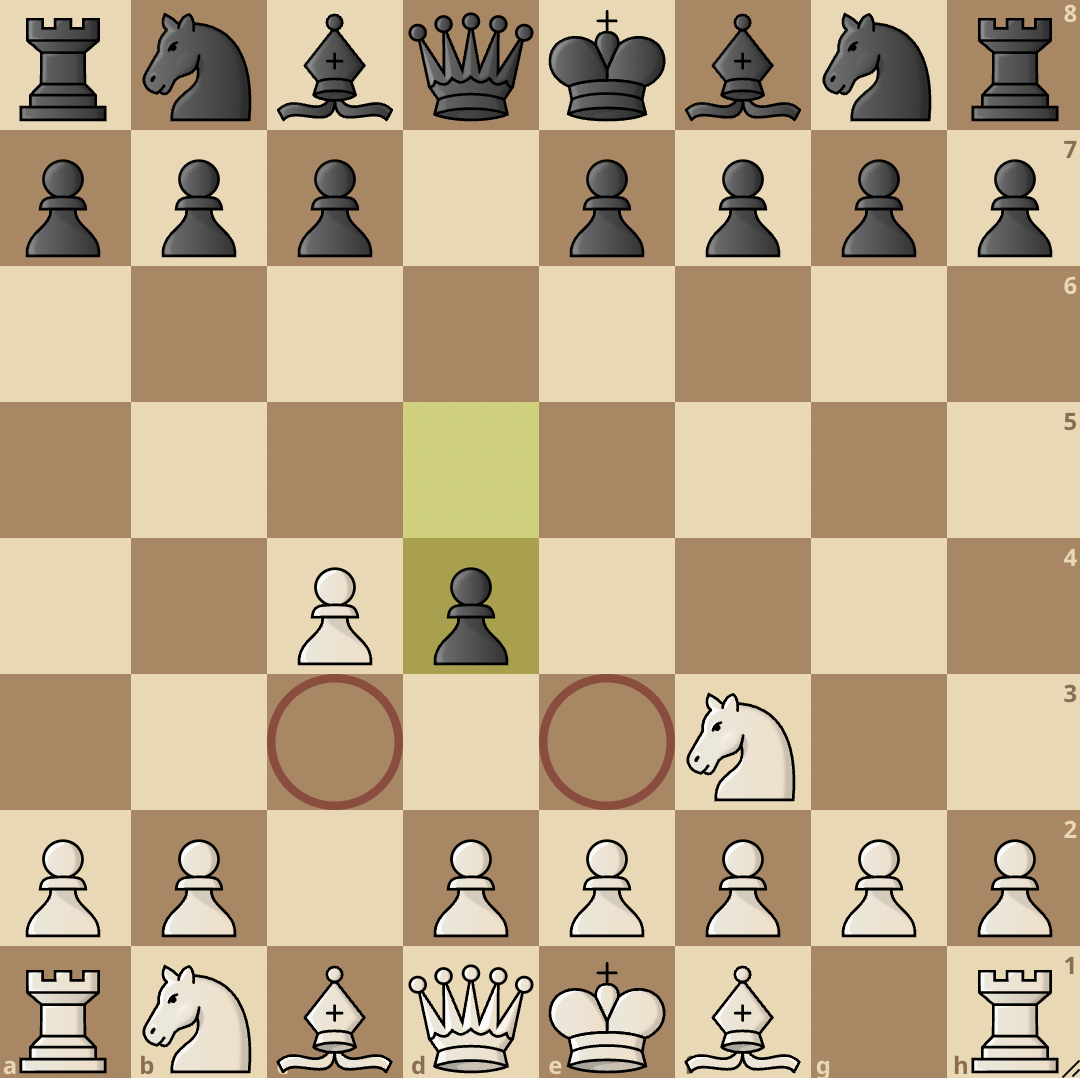
In the Advance variation, Black decides not to capture the pawn, but rather they advance the pawn to the d4 square.
From d4, Black controls the c3 and e3 squares. The d4 pawn is an annoying piece for White as it stifles the development of their b1 knight.
So White continues with 3. g3 and tries to fianchetto their light-squared bishop to control the light-squared diagonal.
Black now plays 3…Nc6, developing a knight and offering protection to the d4 pawn. White continues with their plan and they fianchetto their bishop with 4. Bg2.
Black solidifies their d4 pawn with 4…e5. White then plays 5. d3, opening up lines for their dark-squared bishop and also stopping the advance of Black’s e-pawn.
Black replies by developing their other knight with 5…Nf6. White then tucks their king away and castles it with 6. 0-0.
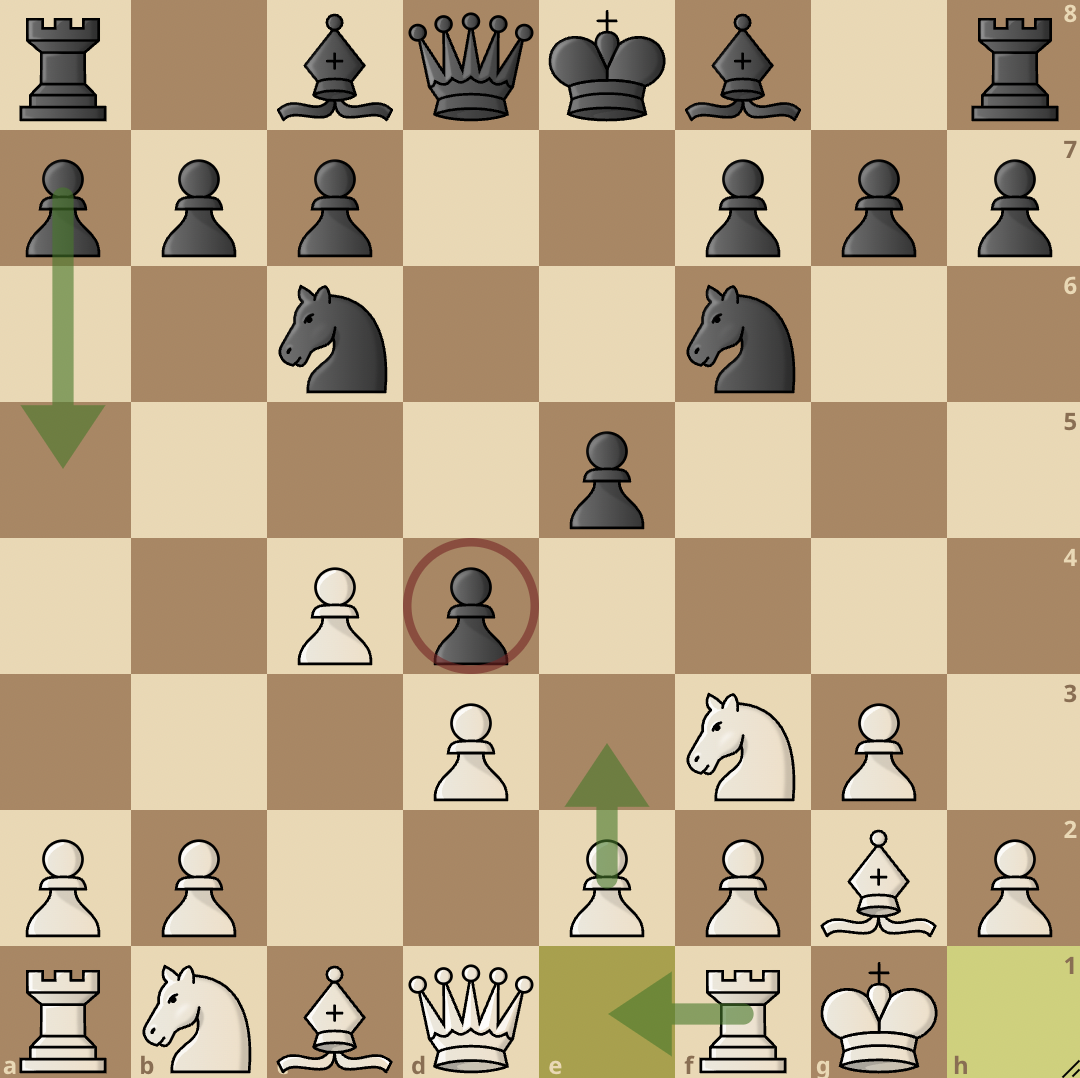
The game continues with White looking to undermine Black’s central control and gain an advantage.
2…dxc4 Reti Accepted
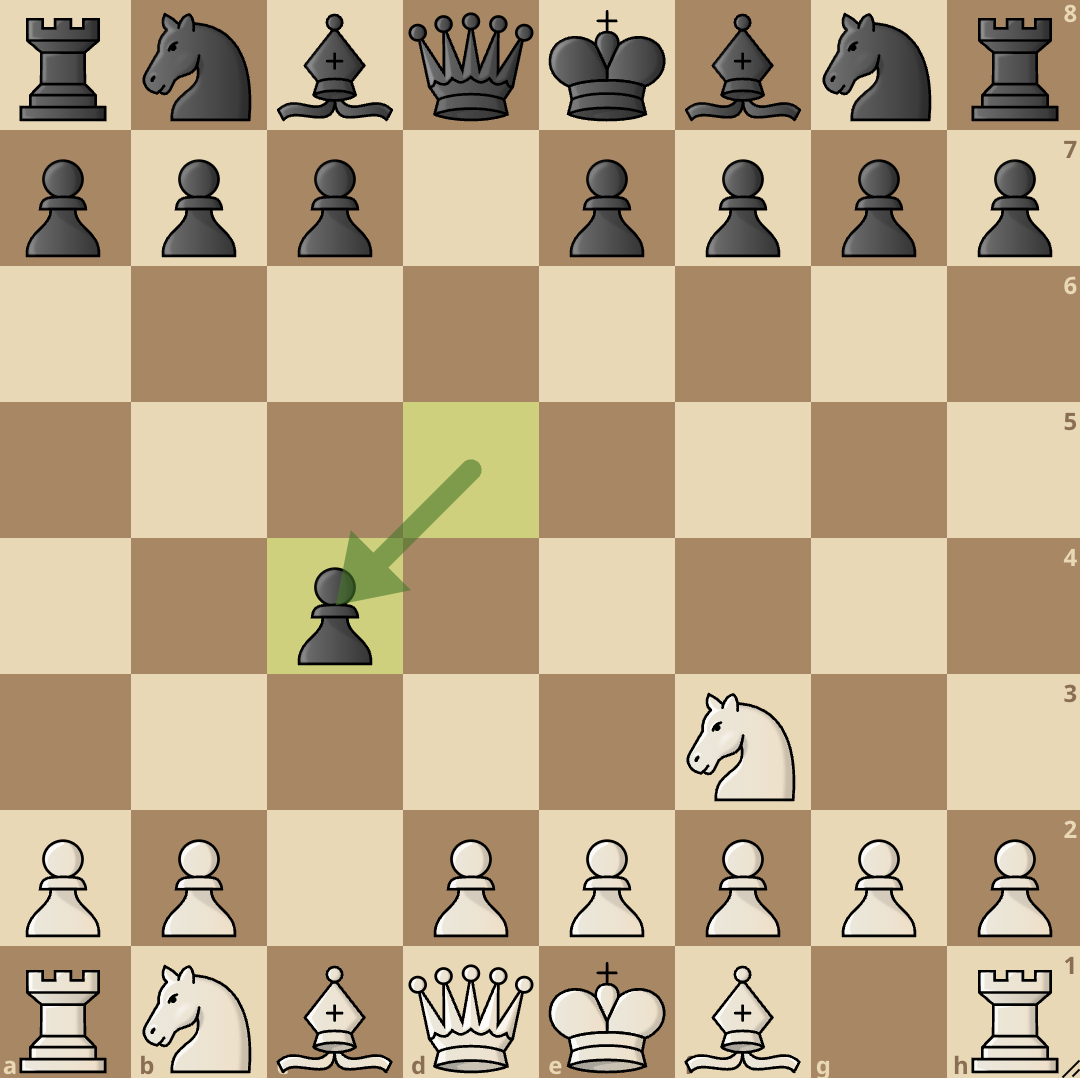
Black can also choose to capture the c4 pawn with 2…dxc4.
By capturing the c-pawn, White gives up control of the central squares in exchange for the flank pawn. White now continues with 3. e3, opening up the light-squared bishop’s attack to the c4 pawn.
From here, Black has a few options to continue with …e6, …c5, or …Nf6.
The game has the potential of developing into a Queen’s Gambit Accepted if Black continues with …e6 (3. e3 e6 4. Bxc4 c5 5. d4 Nf6)
…e6, …c5 and …Nf6 are all good options. However, trying to defend the pawn gives Black no advantage. The ways Black can choose to protect the pawn are 3…Be6 and 3…b5.
If Black plays 3…Be6 to hold on to the pawn, however, this won’t work as after 4. Na3 Black can no longer hold on to the pawn and White will capture it on the next move.
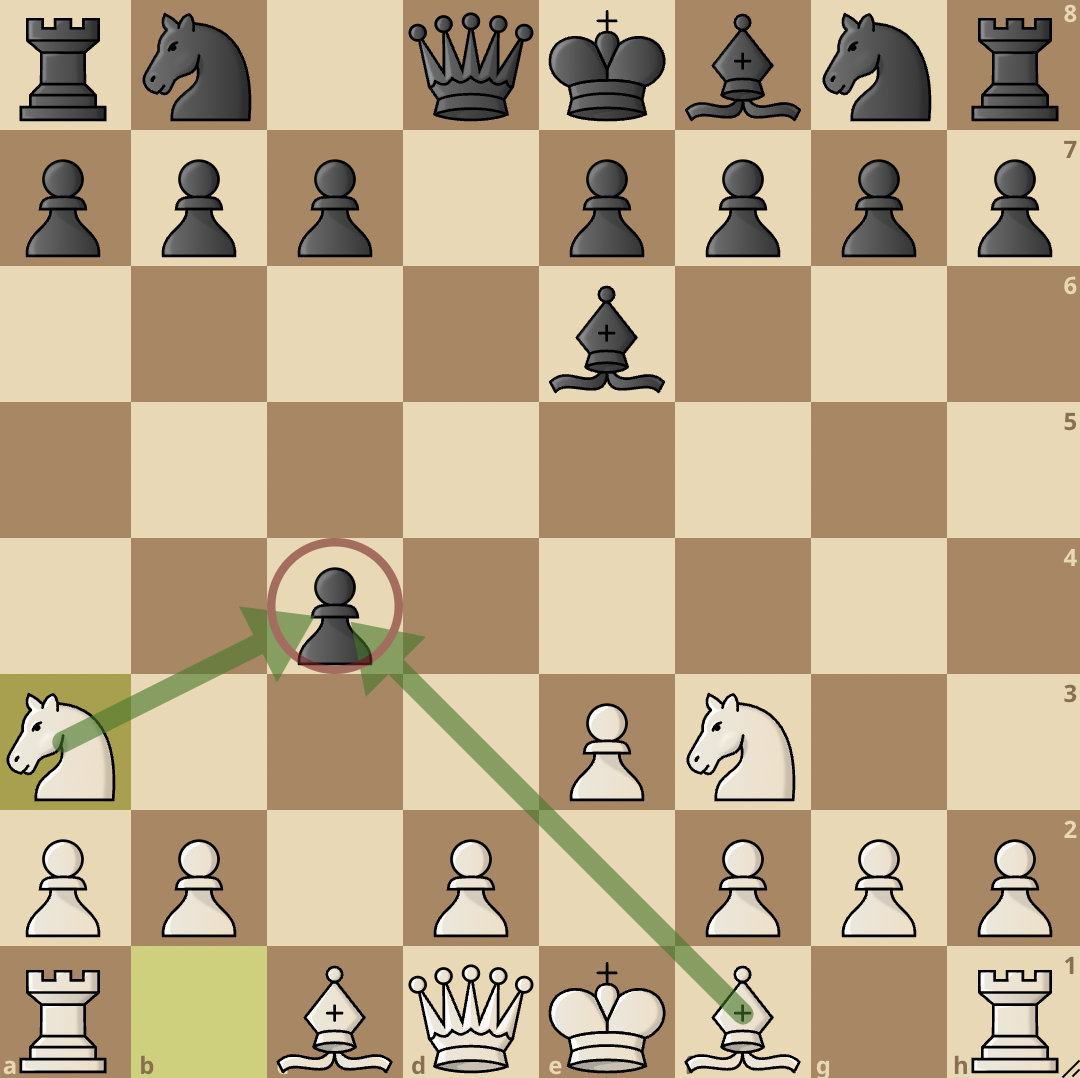
Black can also decide to try and defend the pawn with 3…b5. White then continues with 4. a4, attacking the b5 pawn.
The b5 pawn cannot be defended by Black’s a-pawn as after White captures the b5 pawn, Black cannot recapture it since their rook on a8 would be without a defender.
Therefore, to protect the pawn, Black will play 4…c6. White now plays 5. axb5 and Black recaptures with 5…cxb5.
White now develops their knight to c3 and this comes with an attack on the b5 pawn.

Black now plays 6…Qb6, but after 7. Nd4 Bd7 8. Qf3 Nc6 9. Nd5 Qb7 10. Nxb5, Black is in a terrible position.
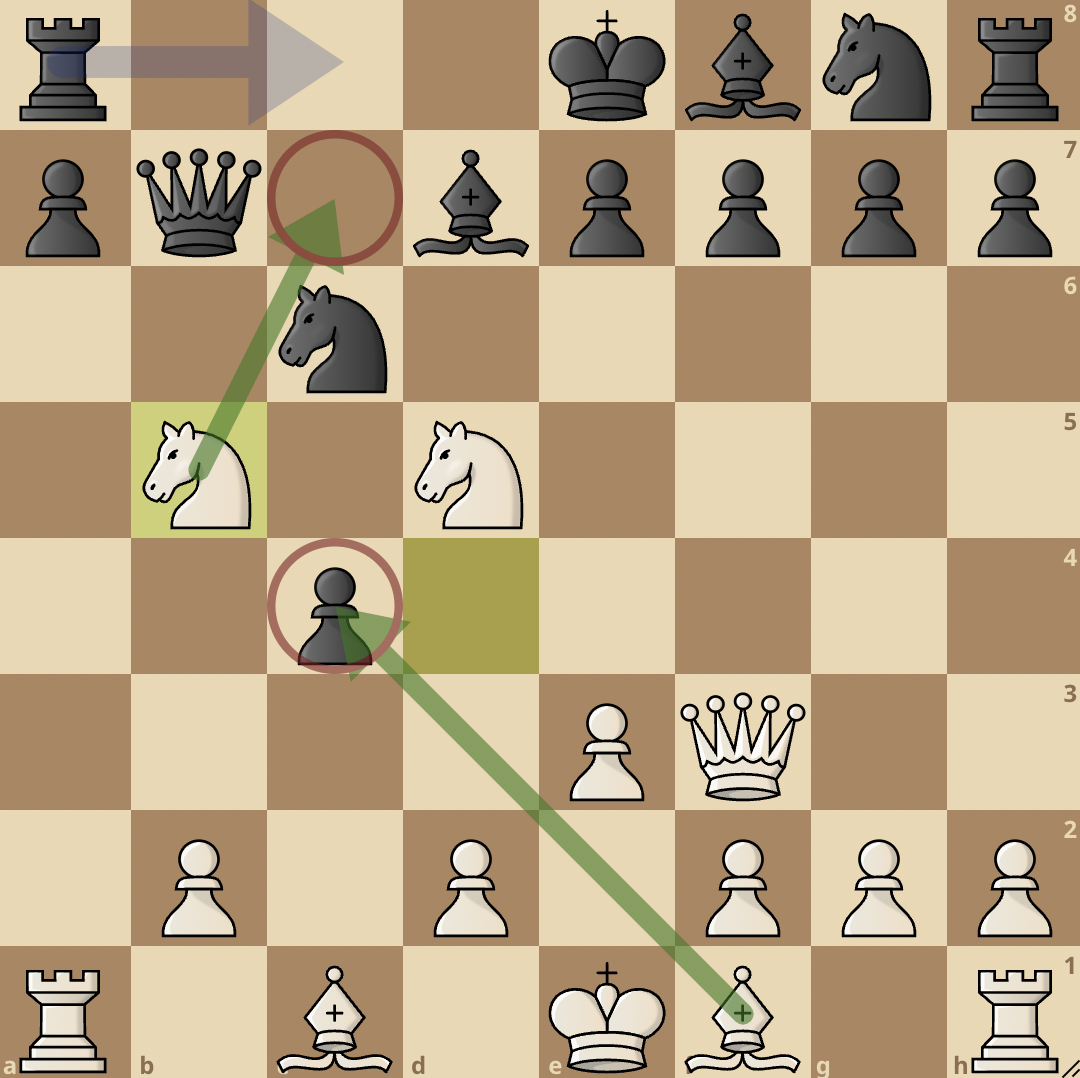
They cannot capture the knight on b5 as Nc7+ would fork the Black king and queen. Black will end up having to give back the pawn and in a worse position.
2…c6 or …e6
…c6 and …e6 are the two most popular continuations for Black after 2. c4.
However, these moves usually transpose into other openings and do not remain within the fold of the Reti.
If Black continues with 2…c6 and White plays 3. d4, the game moves into the Slav Defense variation of the Queen’s Gambit Declined.

However, White can instead choose to remain in the waters of the Reti and play 3. e3, Black usually replies with 3…Nf6. White then continues with 4. Nc3, Black closes their pawn structure with 4…e6, and again in this position, White can choose to continue in the spirit of the Reti with 5. b3 or transpose into the Semi-Slav with 5. d4.
If Black chooses to go for 2…e6, the game instantly transposes into the Agincourt Defense of the English opening.

The Reti Opening can be used in many ways both as an opening of its own and also as a means of transposing into other openings.
Successful Deployments
Touch the moves or move the board around for a better interactive experience.
Richard Reti v David Janowski, New York (1924)
What better game to learn more about the Reti Opening from than a game played by the father of the opening itself?
In the New York Tournament of 1924, Richard Reti would employ his creation to win a very nice game against David Janowski.
Richard Reti v Aron Nimzowitsch, Semmering (1926)
Richard Reti might have been the pioneer for the Reti Opening, but he was not the only adherent of the hypermodern school of chess. Aron Nimzowitsch was also a very firm believer in the hypermodern principle.
When the two clashed in 1926, the Reti opening was on the board and as both of them understood its principles excellently, it was an exciting duel that ended in Nimzowitsch emerging victorious with the black pieces.
Jose Raul Capablanca v Frank Marshall, Moscow (1925)
Jose Raul Capablanca was a joy to watch in his prime. His understanding of chess and chess position was nearly unrivaled in his time.
In this 1925 game against Frank Marshall, he used his superior positional understanding of chess to employ the Reti and win a very nice game.
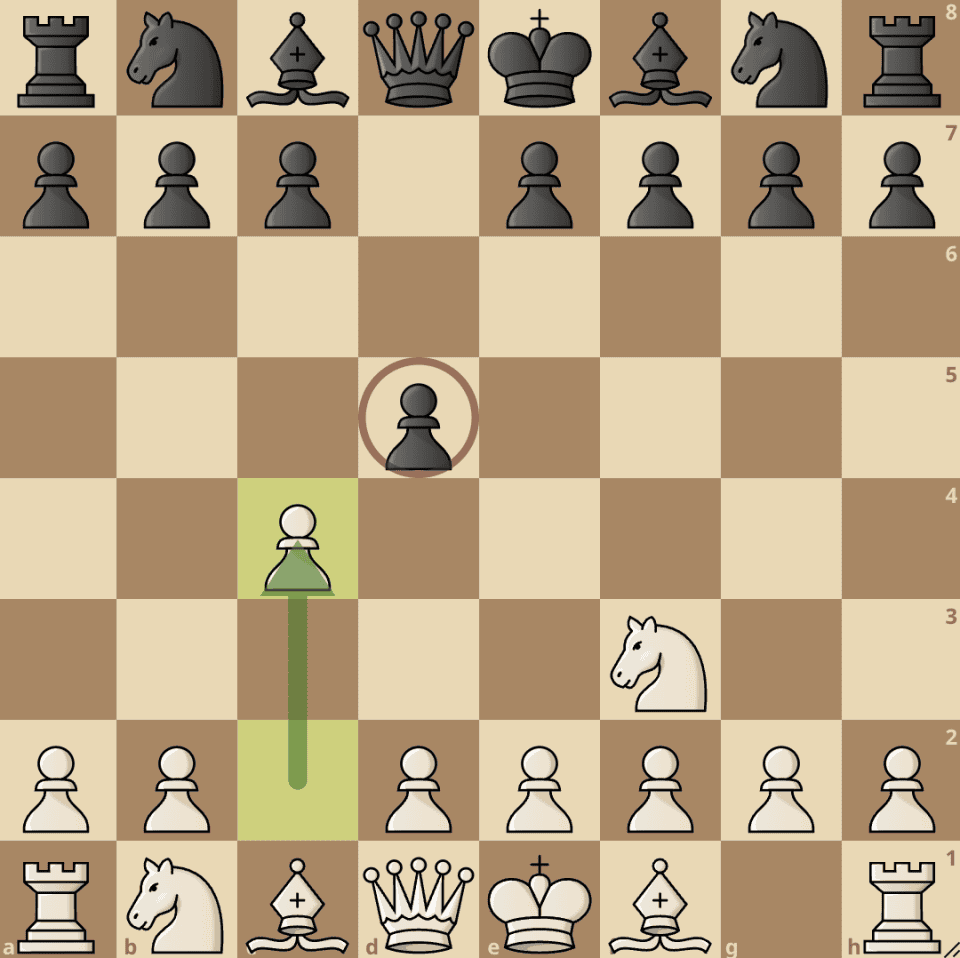




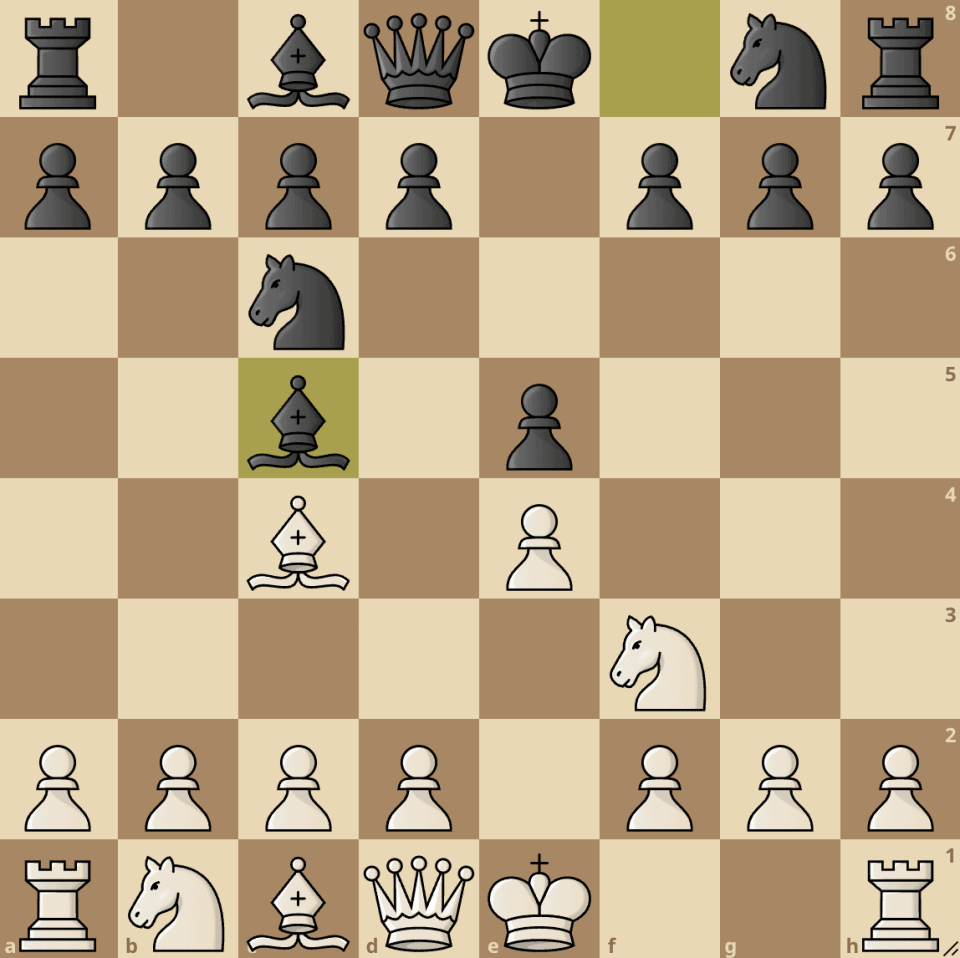

join the conversation